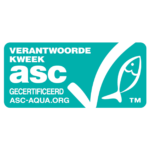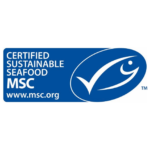Lumpfish
Iceland grounds (FAO 27)
Deelgebieden: Greenland (west)
Gillnets
- Jan
- Feb
- Mar
- Apr
- May
- Jun
- Jul
- Aug
- Sep
- Oct
- Nov
- Dec
Scorpaenidae (also known as scorpionfish) is a family of marine fish that includes many of the most venomous species. It is in the name, scorpionfish have a type of spike or sting that contains a type of venomous slimy substance. Physical characteristics of this type of fish are the compact body, many spikes on head and back and a relatively large mouth. They are widespread in tropical and temperate waters. Most subspecies live at the bottom of the sea and feed with shellfish and little fish. Scorpionfish make use of suction, generated by the oral cavity, to catch their prey.
The most well-known species in the Northesa are gurnards and redfish. The lionfish is also a scorpionfish.
The lumpfish or lumpsucker has a very special appearance. This species has a roundshaped body form with bumps on its back and sides. The pelvic fins of the lumpfish form suction discs which they use to attach firmly to rocks and other surfaces. The spawning season is in early spring and when they are ready to spawn, males turn red or purple and females get a blue-greenish colour. They lay their eggs in shallow waters that are guarded by the males. Lumpfish can get up to 61 cm long and weigh 9,5 kg. They feed on jellyfish, small crustaceans, fish eggs and zooplankton. They can be found in the Atlantic Ocean, North Sea and Baltic Sea. Lumpfish are targeted by fisheries for their eggs that are sold as a cheaper alternative for sturgeon caviar.
Iceland grounds (FAO 27)
Deelgebieden: Greenland (west)
Gillnets
Atlantic Ocean, north-east (FAO 27)
Deelgebieden: Skagerrak and Kattegat
Anchored gillnets, Gillnets

Fish with the ASC label is farmed in a sustainable manner.

Fish with the MSC label is caught sustainably.
This fish is not being overfished or is being responsibly farmed, with minimal impact on the environment.
This fish is a second choice. There are still some improvements to be made in this fishery or fish farm.
Do not buy this fish. It's being overfished or the way it's farmed or caught has a negative impact on the environment.

There is fish available of this species that is farmed or caught using high welfare standards.

GlobalG.A.P. certified farms are doing a step in the right direction in terms of sustainability. A few species with this label are getting a better score on the VISwijzer.

Organic standards are the strictest when it comes to fish feed. They also require certain measures for animal well-being.